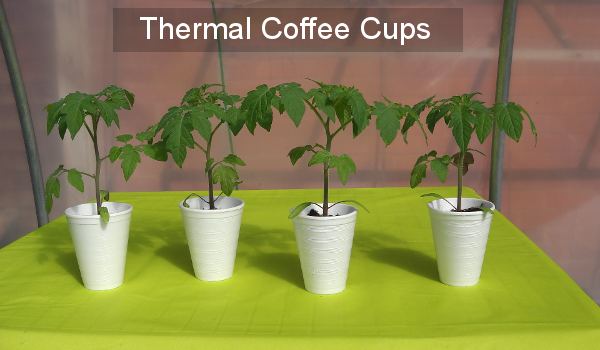One of the great pleasures at this time of the season is sitting in the sun surrounded by trays of seedlings.
It’s like taking a classroom full of kids on a daytrip – except a lot quieter!
Their First Outing
When seedlings and young plants first go outdoors, they have the experience of increased light and air movement.
This is ideal because plants that are able to release moisture through their leaves at an increased rate, grow quicker than those stuck in a conservatory or greenhouse with no air movement.
Moisture Loss
Because increased light levels and air movement increases moisture loss (transpiration) from the leaves, the take up of moisture and nutrients through the roots is greater too. This means that plants should grow at their optimum rate – we just need to make sure they don’t wilt.
This can happen because their roots, at this stage of growth, may not be capable of taking up moisture fast enough.
Wilting
To revive a wilting plant, put it in the shade and mist it with water. If caught in time, the plant will be perfectly OK. If left for a while,
it may not be possible to revive or rehydrate it.
When spraying, mist the underside of leaves because that is where there are the greatest number of holes, known as stomata, that will absorb moisture back into the plant.
Spraying leaves in direct sunlight can damage the leaf surface.
Potting On Options

Thermal coffee cups make a good option when transplanting. They are deeper than the average pot of the same diameter, very inexpensive and white reflects light!
Plastic Beer Glasses
Another option for larger seedlings (young plants) is the pint plastic tumbler. Although It is important to make them light-proof to prevent algae, there is the advantage of being able to see the roots grow!

You will need to make a hole or two in the bottom – be careful with the knife or skewer, the plastic is tough stuff!
Here’s one below without a home made plastic sleeve/cover…

The plastic tumblers can be used for beer too – or tumblers for tumblers!
Their disadvantage is they lack stability but that can be sorted with a shoe box lid with round holes in – or something similar.
Of course you could use conventional pots. I just wish they were a bit deeper for planting lower and white for reflecting light.
Have a great and sunny weekend!
Regards,
Nick
PS If you have any tips or suggestions you would like to share, please leave them in the comments below.

Robert Smith
Dear Nick very much appreciate your Tomato Newsletters and the time and trouble you go to in publishing them, i’m going to be a wee bit later this year in my tomato growing endeavours due to a broken shoulder but hope to manage a bit of a crop nevertheless, was wondering if you would be kind enough to explain to me how to go about growing an extra stem or stems on the Black Cherry plants that I will be potting soon, very grateful for any advice you can give.
Many Thanks and keep up your very informative newsletters.
Nick
Hi Robert, To grow an extra stem, allow a side shoot to develop from the lowest branch elbow. You will find that it grows to the same thickness as the main stem after about six weeks or so, and will develop trusses too. Hope your shoulder makes a full recovery!
Chris
Excellent Nick
Always look forward to these bulletins
Nick
Thanks Chris!
Jessie Allaway
Thanks Nick, you have just reminded me that I have stashed away somewhere in the shed a dozen or so clear plastic pint cups with their black plastic “covers” already in place. Off for a rummage!
Jess.
Nick
I hope you find them!